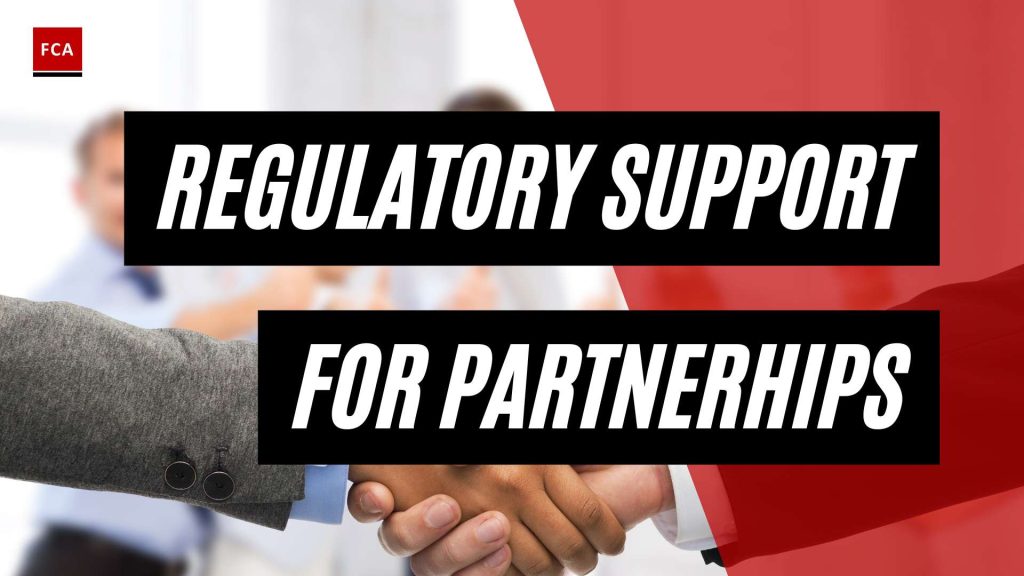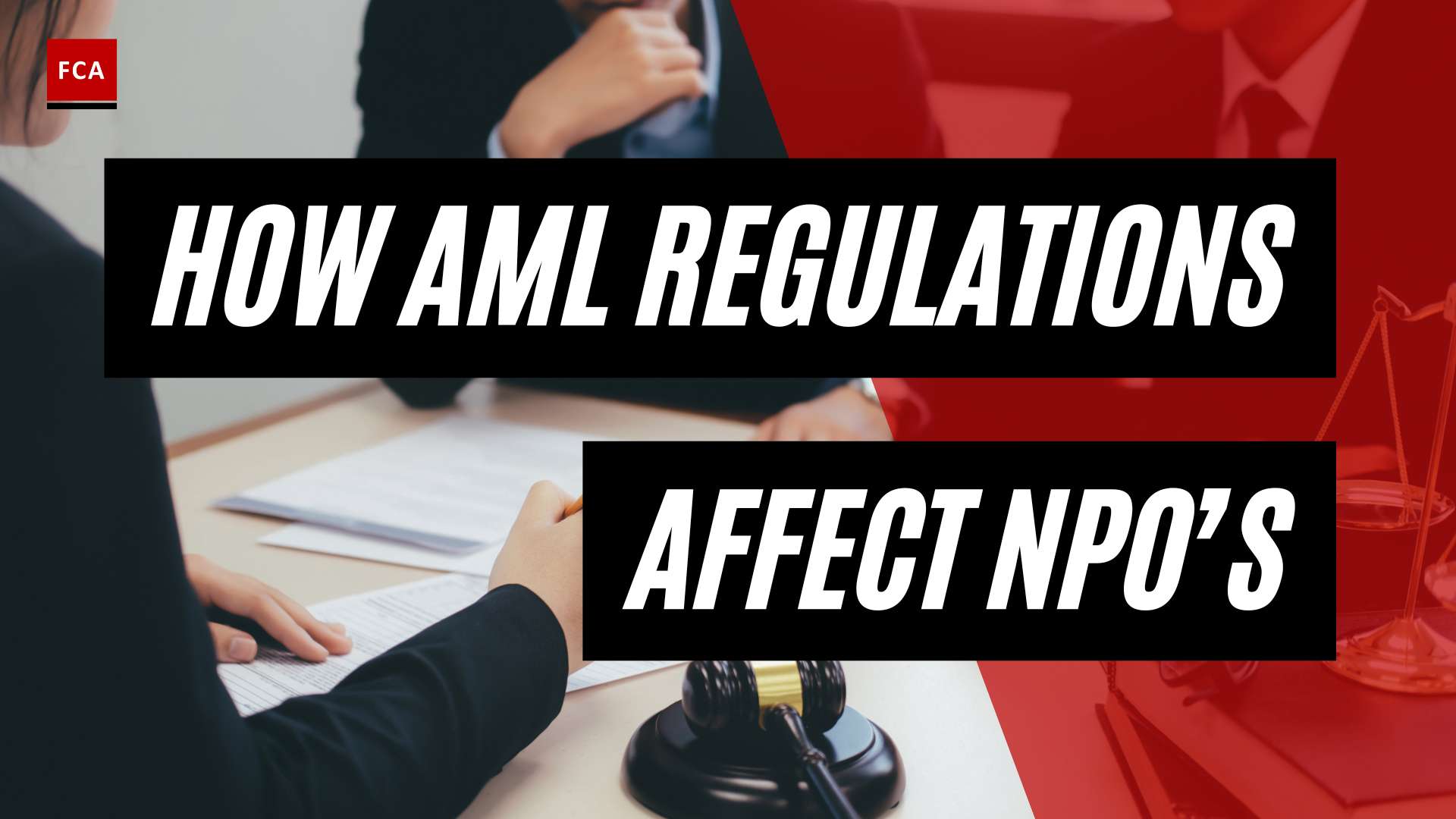Public-Private Partnerships in AML
Public-private partnerships (PPPs) play a crucial role in enhancing anti-money laundering (AML) efforts by fostering collaboration between government agencies, regulatory bodies, and private sector entities. By working together, these partnerships aim to strengthen the overall effectiveness of AML measures and combat illicit financial activities.
Enhancing AML with Collaboration
Collaboration between public and private sectors is essential in the fight against money laundering and terrorist financing. PPPs facilitate the sharing of information, expertise, and resources, enabling a more comprehensive and timely response to these illicit activities. By pooling their knowledge and capabilities, government agencies and private sector entities can identify emerging trends, patterns, and risks more effectively.
Successful collaboration in AML relies on mutual trust and a common goal of protecting the integrity of the financial system. Through PPPs, stakeholders can leverage their complementary strengths and resources to develop innovative solutions, improve risk assessment techniques, and enhance detection and prevention mechanisms.
The Importance of Information Sharing
Information sharing is a key aspect of public-private partnerships in AML. Effective public-private information exchange is crucial in identifying and disrupting illicit financial networks. By sharing relevant and actionable intelligence, government agencies and private sector entities can collectively enhance their ability to detect and deter money laundering and terrorist financing activities.
Public-private information exchange facilitates the flow of information between law enforcement, regulatory authorities, and the private sector. It enables the identification of suspicious transactions, patterns, and individuals that may be involved in illicit financial activities. Timely sharing of information allows for prompt investigations, leading to more successful prosecutions and the prevention of further illicit activities.
To ensure the effectiveness of public-private information exchange, it is essential to establish clear legal frameworks and guidelines. These frameworks should address data protection and privacy concerns while enabling the sharing of relevant information to combat money laundering and terrorist financing. Establishing accountability mechanisms and maintaining transparency among stakeholders are also critical factors in building trust and fostering collaboration.
Examples of successful public-private partnerships in AML include the Joint Money Laundering Intelligence Taskforce (JMLIT) in the UK and the FinCEN Exchange in the US. These initiatives bring together government agencies and private sector representatives to exchange information and collaborate on combating illicit finance. Such partnerships highlight the value of information sharing in enhancing AML efforts and strengthening the global financial system.
In the next sections, we will explore successful examples of public-private partnerships in more detail, along with the challenges and benefits associated with these collaborations.
Successful Examples of Public-Private Partnerships
Public-private partnerships play a crucial role in combating money laundering and enhancing anti-money laundering (AML) efforts. By fostering collaboration and information sharing, these partnerships contribute to a more effective and coordinated response to financial crimes. Two successful examples of such partnerships are the Joint Money Laundering Intelligence Taskforce (JMLIT) in the UK and the FinCEN Exchange in the US.
Joint Money Laundering Intelligence Taskforce (JMLIT)
The Joint Money Laundering Intelligence Taskforce (JMLIT) in the UK has been at the forefront of facilitating public-private collaboration in the fight against money laundering. Established in 2015, JMLIT brings together law enforcement agencies, government bodies, and the financial sector to collectively tackle money laundering threats.
The JMLIT has been instrumental in supporting and developing over 750 law enforcement investigations, helping to identify and disrupt illicit financial activities. This partnership enables the sharing of information, expertise, and resources between public and private entities, enhancing the overall effectiveness of AML efforts.
FinCEN Exchange
The FinCEN Exchange, established by Section 6103 of the Anti-Money Laundering Act of 2020, is a notable public-private partnership in the United States. This initiative fosters a voluntary public-private information-sharing partnership involving law enforcement agencies, national security agencies, financial institutions, and the Financial Crimes Enforcement Network (FinCEN).
The primary goal of the FinCEN Exchange is to promote innovative public-private information sharing for the private sector to better identify risks and provide crucial information to disrupt money laundering, terrorism financing, organized crime, and other financial crimes. Participation in the FinCEN Exchange is by invitation and determined by FinCEN in consultation with law enforcement and relevant stakeholders (FinCEN).
Financial institutions that receive invitations can voluntarily share information with other authorized financial institutions, facilitated by the USA PATRIOT Act Section 314(b) program. This collaboration enables the identification and mitigation of money laundering risks through enhanced information exchange and cooperation.
These successful examples of public-private partnerships demonstrate the value of collaboration and information sharing in the fight against money laundering. By leveraging the expertise and resources of both public and private sectors, organizations can strengthen their AML efforts and contribute to a more robust financial system.
Challenges in Public-Private Information Exchange
While public-private partnerships (PPPs) in anti-money laundering (AML) have shown promise in enhancing efforts to combat financial crimes, there are several challenges that need to be addressed for effective information exchange between the public and private sectors.
Cross-Border Collaboration
One of the significant challenges in public-private information exchange is the limited cross-border collaboration between national-level PPPs. This limitation can undermine the effectiveness of AML compliance, particularly for multinational banks engaged in multiple PPPs (White & Case). The lack of seamless coordination and information-sharing mechanisms across borders hinders the ability to detect and prevent money laundering activities that often transcend national boundaries.
To overcome this challenge, it is crucial for public and private entities to establish robust mechanisms for cross-border collaboration. This may involve the development of frameworks, agreements, and protocols that facilitate the secure and timely exchange of information between jurisdictions. By fostering international cooperation and harmonizing AML efforts, gaps in the detection and prevention of money laundering can be effectively addressed.
Fragmented Landscape and Duplication
Another challenge in public-private information exchange is the fragmented landscape and potential duplication of efforts. Various PPPs and industry initiatives operate independently, resulting in redundant processes and inconsistent information-sharing practices. This fragmentation can impede the efficient utilization of resources and hinder the timely detection and investigation of suspicious financial activities.
To address this challenge, greater coordination and collaboration are needed among public and private entities involved in AML efforts. Establishing overarching frameworks that promote standardized information-sharing protocols and ensure interoperability between different PPPs can help streamline operations and eliminate duplication of efforts. By fostering industry collaboration and sharing best practices, the AML community can enhance the effectiveness of public-private information exchange.
Overcoming these challenges is essential to strengthen AML efforts through effective collaboration between the public and private sectors. By addressing legal and confidentiality constraints, building trust, ensuring data protection, and managing the flow and quality of shared information, the fight against money laundering and terrorist financing can be significantly bolstered (BIS). Continued efforts and ongoing evaluation are necessary to assess the efficiency of public-private information exchange frameworks and adapt to evolving threats in the financial sector related to money laundering and terrorist financing activities (FATF). By addressing these challenges, public-private partnerships in AML can achieve their full potential in combating financial crimes and strengthening the global financial system.
Technology’s Role in Public-Private Information Exchange
In the realm of anti-money laundering (AML), technology plays a crucial role in facilitating secure and efficient public-private information exchange. Leveraging technologies like blockchain, artificial intelligence (AI), and machine learning (ML) can enhance risk assessment, monitoring, and overall compliance with AML regulations.
Leveraging Blockchain for Secure Exchange
Blockchain technology offers a promising solution for secure and transparent information exchange between public and private entities involved in AML efforts. By utilizing a decentralized and immutable ledger system, blockchain ensures the integrity and confidentiality of shared data. This enables stakeholders to securely exchange information while maintaining trust and minimizing the risk of unauthorized access or tampering.
Implementing blockchain-based platforms for public-private information exchange can streamline AML compliance processes by providing a standardized and centralized repository of verified data. This reduces duplication of efforts and enhances transparency among stakeholders, improving collaboration and effectiveness in combating money laundering and terrorist financing.
Harnessing Artificial Intelligence and Machine Learning
Artificial intelligence and machine learning algorithms have the capability to analyze vast amounts of data, enabling more effective detection and prevention of money laundering activities. These technologies can enhance the efficiency and accuracy of AML compliance processes by identifying patterns, anomalies, and suspicious transactions that may otherwise go unnoticed.
By leveraging AI and ML, financial institutions can automate the analysis of large datasets, enabling real-time monitoring and alert generation for potential AML risks. These technologies can also adapt and learn from evolving patterns of money laundering, enabling continuous improvement in detection capabilities.
The use of AI and ML in public-private information exchange empowers stakeholders to make data-driven decisions, improving risk assessment, and strengthening overall AML compliance. By harnessing the power of these technologies, financial institutions can enhance their ability to detect and prevent money laundering activities, contributing to a more robust AML ecosystem.
In summary, technology plays a pivotal role in facilitating secure and efficient public-private information exchange in AML compliance. Leveraging technologies like blockchain, AI, and ML enables financial institutions to improve risk assessment, monitoring, and overall compliance with AML regulations. By embracing these technological advancements, stakeholders can enhance their ability to detect and prevent money laundering activities, strengthening the global fight against financial crime.
The Benefits of Effective Public-Private Information Exchange
In the fight against money laundering and illicit financial activities, effective public-private information exchange plays a vital role. By facilitating collaboration and sharing valuable insights, the partnership between public authorities and private entities enhances various aspects of anti-money laundering (AML) efforts. This section explores two significant benefits of effective public-private information exchange: improved risk assessment and monitoring, and strengthening AML compliance.
Improved Risk Assessment and Monitoring
One of the key benefits of public-private information exchange in AML is the ability to improve risk assessment and monitoring processes. Banks and other financial institutions spend significant resources on compliance systems and file numerous suspicious activity reports (SARs) every year. However, the effectiveness of the global AML regime remains an ongoing concern.
Through enhanced collaboration and information sharing, public-private partnerships (PPPs) can provide a more comprehensive understanding of the evolving money laundering landscape. Sharing intelligence and expertise enables a deeper analysis of suspicious transactions, patterns, and emerging trends, leading to improved risk assessment capabilities. This, in turn, aids in the identification of potential money laundering activities and the development of effective countermeasures. By leveraging the collective knowledge and resources of both public authorities and private sectors, a more robust AML ecosystem can be established.
Strengthening AML Compliance
Effective public-private information exchange also strengthens AML compliance efforts. Collaboration between public authorities and private entities allows for a more comprehensive and timely response to illicit financial activities. By sharing information, such as suspicious transaction reports, intelligence on emerging risks, and typologies of money laundering schemes, the AML community can gain a deeper understanding of criminal behavior (BIS).
The shared knowledge and insights obtained through public-private partnerships enable financial institutions to enhance their compliance practices. This includes improving customer due diligence processes, implementing robust transaction monitoring systems, and identifying red flags associated with money laundering and terrorist financing (FATF). By leveraging the collective intelligence and expertise of both public and private sectors, the overall integrity of the financial system is strengthened, helping to safeguard against money laundering activities (BIS).
In conclusion, effective public-private information exchange in AML efforts brings significant benefits to the fight against money laundering. Through improved risk assessment and monitoring, as well as strengthened AML compliance, collaboration between public authorities and private entities helps to create a more robust AML ecosystem. By sharing information, expertise, and insights, the global community can enhance its ability to detect, prevent, and combat money laundering and illicit financial activities, thereby safeguarding the integrity of the financial system.
Legal and Framework Considerations for Information Exchange
In the realm of public-private partnerships in AML, establishing a clear legal basis and framework for information exchange is crucial. This ensures that data protection and privacy concerns are adequately addressed while enabling the sharing of relevant information to combat money laundering (ML) and terrorist financing (TF) activities.
Addressing Data Protection and Privacy Concerns
When exchanging sensitive information between public authorities and private entities, it is essential to prioritize data protection and privacy. This involves implementing robust safeguards and complying with relevant laws and regulations. The Financial Action Task Force (FATF) emphasizes the importance of striking the right balance between information sharing and safeguarding individual privacy (FATF).
To address data protection concerns, public-private partnerships should consider the following:
-
Anonymization and Aggregation: Before sharing information, personal data should be anonymized or aggregated to protect the privacy of individuals involved. By removing identifiable details, the focus can remain on identifying patterns and suspicious activities.
-
Access Controls and Limited Use: Establishing clear guidelines on who can access shared information and for what purposes helps prevent misuse of data. Limiting access to authorized personnel and defining the permissible scope of data use ensures compliance with data protection regulations.
-
Data Retention and Destruction: Public-private partnerships should define retention periods for shared information. Once the data is no longer required, it should be securely destroyed to prevent unauthorized access or accidental disclosure.
-
Encryption and Secure Communication: Utilizing encryption techniques and secure communication channels adds an extra layer of protection to sensitive information. This helps ensure that data remains confidential during transmission and storage.
By addressing these data protection and privacy concerns, public-private partnerships can foster trust and confidence among stakeholders, encouraging greater collaboration in the fight against ML and TF.
Establishing Clear Guidelines and Accountability
Transparency and accountability play a crucial role in public-private information exchange. Clear guidelines and frameworks should be established to define the roles, responsibilities, and obligations of the participating entities. This ensures that all parties understand their respective contributions and expectations.
Key considerations for establishing clear guidelines and accountability include:
-
Governance Structure: Public-private partnerships should have a well-defined governance structure that outlines decision-making processes, communication channels, and mechanisms for resolving disputes or conflicts of interest. This structure promotes efficient collaboration and effective information exchange.
-
Standardized Procedures: Establishing standardized procedures for information sharing helps maintain consistency and clarity. These procedures should include protocols for data collection, analysis, and dissemination, ensuring that relevant information reaches the appropriate entities in a timely manner.
-
Training and Awareness: Adequate training and awareness programs should be implemented to ensure that all participants understand the importance of information exchange, the legal framework, and the procedures in place. This helps minimize errors and enhances compliance with established guidelines.
-
Monitoring and Evaluation: Ongoing monitoring and evaluation of the information exchange processes are vital to assess their effectiveness and identify areas for improvement. Regular reviews enable stakeholders to adapt to evolving threats and regulatory changes, ensuring that the partnership remains robust and aligned with its objectives.
By addressing legal and framework considerations and establishing guidelines and accountability, public-private partnerships in AML can operate within a transparent and structured framework. This enables effective information sharing, enhances collaboration, and strengthens the collective efforts to combat ML and TF.
International Cooperation in AML Efforts
To effectively combat money laundering and terrorist financing, international cooperation and collaboration between public and private entities are crucial. This section explores the importance of collaborating on information sharing and strengthening the global financial system in the context of anti-money laundering (AML) efforts.
Collaborating on Information Sharing
Collaboration between public authorities and private entities through improved information exchange mechanisms can lead to a more robust AML ecosystem, strengthening the global fight against money laundering and terrorist financing. Sharing information between public authorities, such as law enforcement agencies, and private sectors, including banks, insurance companies, and other financial institutions, is essential to effectively identify suspicious transactions and detect illicit financial activities (BIS).
Public-private cooperation allows for a deeper understanding of criminal activity and facilitates more effective responses, ultimately improving the integrity of the financial system. By collaborating on information sharing, both public and private entities can leverage their respective expertise and resources to enhance their AML efforts.
Strengthening the Global Financial System
Effective public-private information exchange is crucial in the fight against money laundering and terrorist financing. It helps ensure a comprehensive and timely response to these illicit activities, strengthening the overall integrity of the global financial system (FATF). By sharing relevant information and intelligence, public and private entities can work together to detect and prevent illicit financial activities.
Collaboration within the global financial system is particularly important due to the cross-border nature of money laundering and terrorist financing. Criminals often exploit jurisdictional boundaries, making it essential for international cooperation to effectively identify and disrupt their illicit activities. Strengthening the global financial system through public-private partnerships establishes a united front against money laundering, promoting transparency, and safeguarding the integrity of the international financial system.
International cooperation in AML efforts is not without its challenges, including legal and regulatory considerations, data protection and privacy concerns, and the need for clear guidelines and accountability (FATF). However, by addressing these challenges and fostering collaboration between public and private sectors, we can create a more effective and coordinated global AML framework.
As AML threats continue to evolve, it is essential to evaluate and adapt public-private partnerships to stay ahead of the curve. Ongoing monitoring and assessment help identify areas for improvement, ensuring that information exchange frameworks remain efficient and effective (FATF). By building trust, transparency, and accountability, public and private entities can work together to strengthen AML efforts on a global scale.
In conclusion, international cooperation in AML efforts through public-private partnerships is vital to combat money laundering and terrorist financing. Collaborating on information sharing and strengthening the global financial system fosters a united front against illicit financial activities, promoting transparency, and safeguarding the integrity of the global financial system. By working together, public and private entities can enhance their AML capabilities and contribute to a more secure and resilient financial landscape.
The Road Ahead for Public-Private Partnerships in AML
As the fight against money laundering and illicit financing continues, the road ahead for public-private partnerships in AML involves two key aspects: evaluating and adapting to evolving threats, and building trust and transparency.
Evaluating and Adapting to Evolving Threats
To effectively combat money laundering and terrorist financing, public-private partnerships must continuously evaluate and adapt to evolving threats. Criminals are constantly finding new ways to exploit vulnerabilities in the financial system, necessitating a proactive and dynamic approach.
Regular assessments of the effectiveness of public-private partnerships are essential to identify areas for improvement and enhance the overall response to emerging threats. This includes evaluating the efficiency of information sharing mechanisms, assessing the quality and timeliness of shared data, and gauging the impact of collaborative efforts on detecting and deterring illicit financial activities.
As highlighted by the U.S. Department of Treasury, the 2022 National Strategy for Combating Terrorist and Other Illicit Financing emphasizes the importance of public-private information exchange in adapting to evolving threats. It recognizes that private sector entities often possess critical information that would be beneficial to law enforcement and national security.
By leveraging the expertise and resources of both the public and private sectors, public-private partnerships can stay ahead of emerging threats, enhance risk assessments, and strengthen the integrity and security of the financial system.
Building Trust and Transparency
Establishing trust and transparency is vital for the success of public-private partnerships in AML. Collaborative efforts require mutual trust between public authorities and private entities, as well as transparency in information sharing processes.
Addressing data protection and privacy concerns is crucial to build trust among stakeholders. Clear legal frameworks that ensure data protection and privacy while enabling the sharing of relevant information are essential (FATF). This includes establishing guidelines for the collection, storage, and use of shared data, as well as defining roles and responsibilities of involved parties.
Accountability in public-private partnerships is equally important. Clear guidelines and mechanisms for oversight and accountability ensure that information is shared responsibly and used for legitimate purposes. Maintaining transparency in the information exchange process fosters confidence among stakeholders and strengthens collaboration in combating financial crimes like money laundering and terrorist financing.
By evaluating and adapting to evolving threats while building trust and transparency, public-private partnerships in AML can effectively contribute to the detection, prevention, and deterrence of illicit financial activities. These collaborations play a critical role in strengthening the global financial system and safeguarding it against abuse by criminals.
To further enhance the effectiveness of public-private partnerships, international cooperation in AML efforts is crucial. Collaborating on information sharing and aligning regulatory frameworks across jurisdictions is essential to address the challenges posed by cross-border financial crimes. By working together, governments, regulatory bodies, and private sector entities can create a unified front against money laundering and illicit financing, contributing to a safer and more secure global financial landscape.








